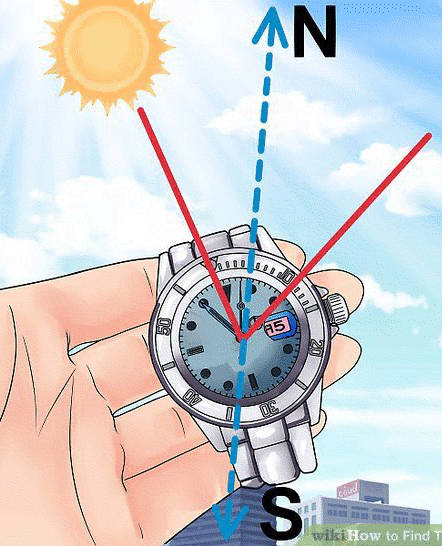Directions without compass
Compasses are useful for finding directions, but they aren't necessary as long as certain conditions hold such as the sky being visible.
North star/southern cross
Find the big dipper. Extend a line through the two stars furthest from the handle. Push a long stick into the ground and hole a shorter stick. When the tips of the sticks and the north star aligns, the line between the sticks is a true north-south line.

Crescent moon
Find the crescent moon. Draw a line from the moon's tips to the horizon. If you are in the northern hemisphere, the point where it contacts the horizon is roughly north.

Star movement
Due to the Earth's rotation, stars seem to rotate around the north star. Stars rise in the east and set in the west.
Sun movement
Track the movement of the sun for some time. The sun moves more or less from east to west. It is located in the southern portion of the sky when viewed in the northern hemisphere.
Watch
Place a twig (or anything able to cast a line shadow) against the edge of an analog watch at the point of the hour hand. Turn the watch until the twig's shadow falls along the hour hand's potion. A line bisecting the angle from the numeral 12 (or 1 if daylight saving time) and the shadow will point south.

Stick shadow
Push a stick into the ground so that it makes no shadow. Wait until it casts a shadow at least 6 inches long. The shadow will point east from the stick.

Moss
Look for moss on trees. Moss grows where there is shadow, so in the northern hemisphere moss usually grows on the northern side of the tree. Keep in mind other causes of shadow such as other trees.
Views: 167
Replies coming soon